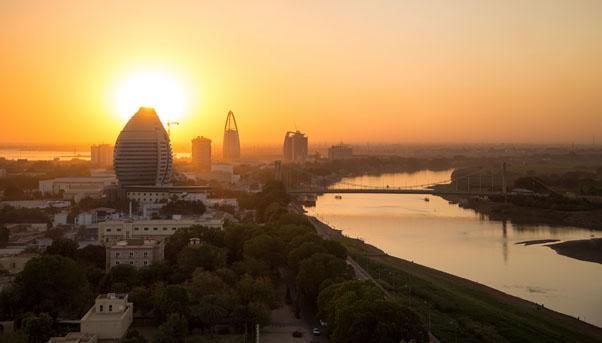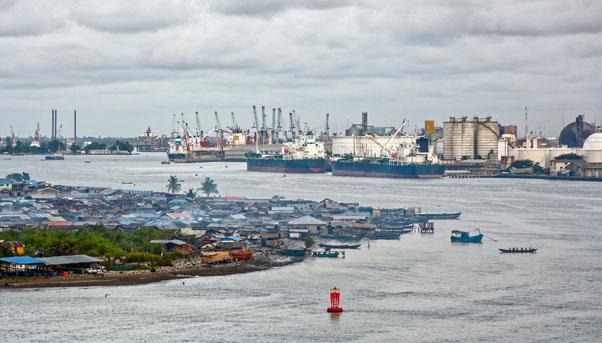
The reasons behind the expected rise of the continent in the coming decades, as described by the International Monetary Fund (IMF), are many: a growing population and a subsequent rise in the number of people of working age; greater wealth, especially in the sub-Sahara; modernizing economies, with a focus on infrastructure, services and tourism. With 22 countries each expected to grow at rates of more than 5% this year, Africa is becoming an attractive place for foreign investors as it becomes an engine for global growth.
Demographic Push
The world’s richest countries, such as those belonging to the Group of Seven (G7) and China, are experiencing a demographic decline since reaching the peak of their respective working age populations in 2010.
By contrast, Africa is in full bloom: in the next 35 years, its population will grow from 1.1 billion to 2 billion. Among the 25 countries with the highest fertility rates on the continent, only two are not from the sub-Saharan region, where 43% of the population are today aged less than 14 years.
By 2030, the contribution of the African continent to the numeric growth in the global workforce will exceed all other continents combined. This means that, from 2030 to 2050, the world’s working age population will keep growing thanks to the youth of Africa.
More people of working age means fewer dependents such as children and senior citizens who consume resources but do not generate any income.
The rise in aggregate savings from this burgeoning workforce could lead to greater investments on the continent – which is still to this day reliant on transfer payments from abroad. It could also result in a greater capital stock and higher productivity. And income per capita is bound to rise along with internal demand, helping further stimulate the economy.
Galopping GDP
As Africa’s development gradually becomes a steady trajectory, the sub-Sahara is the region that is growing the most.
Of the 41 countries in the world that in 2015 are each expected to grow at rates of more than 5 percent – 22, as mentioned earlier, are African. No country from Europe or North America is among them.
Other figures give a similar idea of Africa’s potential. The IMF forecasts the gross domestic product (GDP) of 45 sub-Saharan countries will grow a combined 26.3% between 2015 and 2020. Impressive figures – especially when compared with the 10.6 percent rate that the G7 and the European Union are each expected to register during the same period, or the 7.9% rate for the euro zone. Leading this growth in Africa are countries like the Ivory Coast with 7.7 percent, Tanzania with 7.2 percent, Kenya with 6.8 percent and the Democratic Republic of Congo with 9.2 percent. But there are other stories of extraordinary growth: Ethiopia has grown by an annual 6 percent in the last three years, Cameroon by 5 percent and Ghana by 7 percent.
Despite the drop in oil prices, other countries in the sub-Sahara are registering strong surges in development, such as Angola, Mozambique and Nigeria , which is a member of the Organization of the Petroleum Exporting Countries (OPEC) and the most populous country on the continent with 170 million. Others like South Africa, Zambia and, again, Congo have been hit by the decline in commodity prices including copper, zinc and gold. This is due to a weakening China, the world’s biggest consumer of primary materials. It is also despite promising signs of recovery in Europe.

Infrastructure and Services
All of these sub-Saharan countries, even those suffering from the decline in oil and commodity markets, have begun developing industry, laying down transportation infrastructure and nurturing agriculture in order to resist challenging market trends. They are also expanding into services with the help of digital and mobile technologies, allowing them to diversify their own sources of income even further.
There are at least 90 technology hubs on the continent that offer space and resources to entrepreneurs looking for solutions to challenges facing their respective countries: access to education, a secure connection to the Internet, efficient public transportation, reliable payment systems, dependable healthcare and environmental protection. This last challenge is closely linked to the development of ecotourism, a fundamental industry for many countries in Africa: from Kenya to Botswana to Zambia to Namibia. There are also islands that are even more dependent on ecotourism, such as Madagascar, Cape Verde, Mauritius, Reunion and Seychelles.
Influence of the global economy
As it becomes a more integral part of the global economy, Africa is also less isolated from its problems, such as the slowdown in China. The export of manufactured goods from the sub-Sahara to China grew from 400 million dollars a year to 12 billion dollars between 2000 and 2013 before slowing down. China’s interest in the region had favored the creation of manufacturing clusters in Ethiopia for glass, leather goods and car parts, Uganda for textiles and steel tubes) and Mali for refined sugar.
«We are all aware of that the transformation of agricultural and mineral resources will allow Africa to obtain value-added products that will help the continent join the world economy,» United Nations Secretary General Ban Ki-moon said at the last general assembly in September. «Our collective challenge consists of helping Africa develop the necessary capabilities so that this can be achieved in a peaceful, orderly and comprehensive way».

